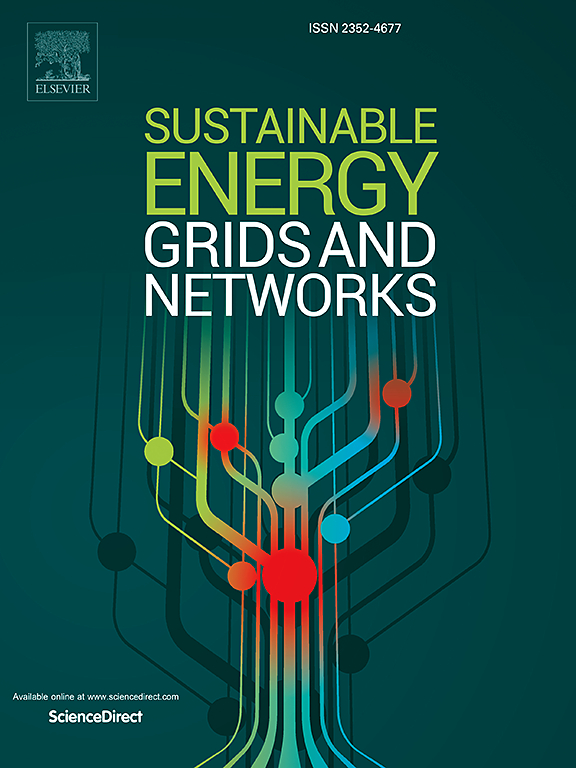Self-healing power systems using reinforcement learning over graphs for controlled grid islanding
IF 5.6
2区 工程技术
Q2 ENERGY & FUELS
引用次数: 0
Abstract
Natural disasters and sudden faults create rapidly changing conditions that significantly challenge the power system’s resilience. Intelligent algorithms can enable operators to take informed actions for rapid restoration by suggesting efficient switching strategies to enhance the resilience of power grids against extreme events. The intentional islanding restoration strategy isolates vulnerable areas and identifies self-sustaining subsystems to prevent system collapse and minimize risk exposure to extreme events. In this paper, we develop a graph-based reinforcement learning (GRL) model to design AI-assisted switching in transmission networks that mitigate risks by strategically isolating affected areas for self-healing during power outages. To train the AI agent with an awareness of the transmission network’s topology for decision-making, the adjacency graph of the transmission network is mapped to the convolutional network of the reinforcement learning model. The intentional controlled islanding problem is modeled as a Markov decision process, where the optimal switching policy is learned using the GRL approach. The dynamic model of the transmission network used in training the agent incorporates generator inertia and load behavior for stability and frequency control, while also reducing power flow mismatches within the formed islands. The effectiveness of this framework is demonstrated using the modified IEEE 118-bus network and validated using dynamic simulations.
基于图上强化学习的自愈电力系统控制电网孤岛
自然灾害和突发故障造成快速变化的环境,极大地挑战了电力系统的恢复能力。智能算法可以通过建议有效的切换策略来增强电网对极端事件的弹性,从而使运营商能够采取明智的行动进行快速恢复。有意的孤岛恢复策略隔离了脆弱区域,并确定了自我维持的子系统,以防止系统崩溃并最大限度地降低暴露于极端事件的风险。在本文中,我们开发了一种基于图的强化学习(GRL)模型来设计输电网络中的人工智能辅助切换,通过在停电期间战略性地隔离受影响区域以进行自我修复来降低风险。为了训练具有传输网络拓扑意识的AI智能体进行决策,将传输网络的邻接图映射到强化学习模型的卷积网络。有意控制孤岛问题被建模为马尔可夫决策过程,其中使用GRL方法学习最优切换策略。用于训练代理的输电网络动态模型结合了发电机惯性和负载行为,以实现稳定性和频率控制,同时还减少了形成岛屿内的潮流不匹配。采用改进的IEEE 118总线网络验证了该框架的有效性,并通过动态仿真验证了该框架的有效性。
本文章由计算机程序翻译,如有差异,请以英文原文为准。
求助全文
约1分钟内获得全文
求助全文
来源期刊

Sustainable Energy Grids & Networks
Energy-Energy Engineering and Power Technology
CiteScore
7.90
自引率
13.00%
发文量
206
审稿时长
49 days
期刊介绍:
Sustainable Energy, Grids and Networks (SEGAN)is an international peer-reviewed publication for theoretical and applied research dealing with energy, information grids and power networks, including smart grids from super to micro grid scales. SEGAN welcomes papers describing fundamental advances in mathematical, statistical or computational methods with application to power and energy systems, as well as papers on applications, computation and modeling in the areas of electrical and energy systems with coupled information and communication technologies.
 求助内容:
求助内容: 应助结果提醒方式:
应助结果提醒方式:


